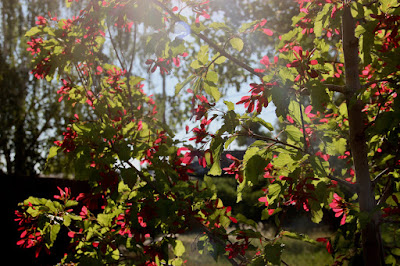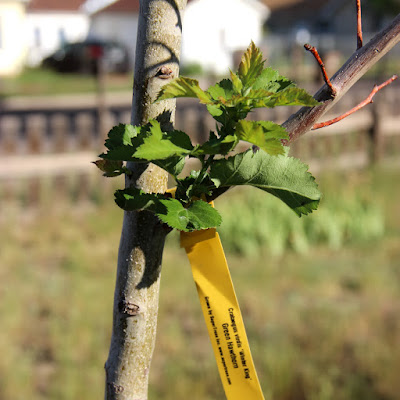 |
| Miner's candle; southern Laramie Mountains, Wyoming. |
Smith gave it and other plants he collected in the Denver area to Thomas Conrad Porter, botanist with the Hayden Expedition of 1869, who did consider it noteworthy. He described and named it as a new species in Hayden's 1871 report.
Like me, Porter was impressed with the inflorescence. "... cymis plurimis in axillis foliorum conglomeratis pedunculatis superne subsessilibus confertisque;" he wrote in the obligatory Latin, before explaining that "the stout virgate spike made up of numerous glomerate cymes, crowded in the axils of the linear cauline leaves, which much exceed them in length" was unusual enough that "I have ventured to give it a name." He chose Eritrichium virgatum, in reference to the inflorescence. (Virgate means long, straight, and slender.)
 |
| The inflorescence takes up most of the plant! |
 |
| Below each flower cluster is a long leafy bract, or leaf if you prefer. |
Over the next half century, taxonomists would revise the section of the borage family containing this species several times, moving it from genus to genus, often noting the distinctive inflorescence. In 1885, the great Asa Gray called it Krynitzkia virgata. "The slender leaves subtending the cymes of the virgate thyrsus are an inch or two long, all but the uppermost several times longer than the flower-clusters."
Two years later, Edward Lee Greene put it in Oreocarya. And finally, in 1927, Edwin Blake Payson of the University of Wyoming moved it to Cryptantha, where it remains today. He wrote: "The strictly erect, rod-like stems with the closely set white flowers are unique. The numerous elongated leaf-like bracts add to the peculiar appearance and serve to separate the species from its relatives." That's another reason I like this plant. Not only is it stunning when in bloom, it's easy to identify! (Cryptntha is a genus notorious for id challenges.)
 |
| "elongated leaf-like bracts add to the peculiar appearance" (photo by Patrick Alexander 2011). |
 |
| Spectacular hairs, common in the Boraginaceae, make a 10x hand lens a good investment! (Patrick Alexander). |
Also peculiar is the distribution of this miner's candle. It's restricted to rocky slopes at lower elevations in the Rocky Mountains of Colorado and southeast Wyoming. In Plant story: miner's candle, Cryptantha virgata, wandering botanist Kathy Keeler finds this odd. "The Rocky Mountains extend 3000 miles (4800 km) from northern British Columbia in Canada to New Mexico in the southern United States, so there would seem to be a lot of similar terrain where miner's candle could grow. But it doesn't."
 |
| Cryptantha virgata (Rocky Mountain Herbarium, U WY) |
But there's more to distribution than potential habitat. Seeds have to get there, seedlings have to survive. Maybe the distribution of Cryptantha virgata is limited because it hasn't dispersed to all potential habitat ... yet. Maybe it's only recently evolved, and now is slowly spreading.
 |
| The Denver area in 1869, by William Henry Elliott of the Hayden Expedition. |
Sources (most available online at Biodiversity Heritage Library)
Elliott, Henry W. Sketches made by the artist of the Geological Survey of Colorado & New Mexico. US Geological Survey Open-File Report 03-384. PDF
Gray, A. 1885. Proceedings of the American Academy of Arts and Sciences 20: 279.
Greene, E.L. 1887. Pittonia 1: 58.
Hayden, F.V. 1871. Preliminary Report of the United States Geological Survey of Wyoming and Portions of Contiguous Territories: 479–480 [in Porter's Catalogue of Plants].
Payson, E.B. 1927. A monograph of the section Oreocarya of Cryptantha. Annals of the Missouri Botanical Garden 14: 270.
Williams, R.L. 2003. A Region of Astonishing Beauty: The Botanical Exploration of the Rocky Mountains. Roberts Rinehart








